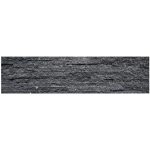Introduction:
Fireplaces have been a centerpiece of homes for centuries, providing both warmth and ambiance to living spaces. In recent years, the use of cultured stone for fireplace surrounds and mantels has gained popularity due to its versatility, durability, and aesthetic appeal. Cultured stone offers the look and feel of natural stone but at a more affordable price point, making it an attractive option for homeowners looking to enhance the beauty and functionality of their fireplace. In this comprehensive guide, we will explore the benefits of using cultured stone for fireplace installations, different design options available, installation considerations, maintenance tips, and more.
Benefits of Cultured Stone for Fireplaces:
1. Aesthetic Appeal: Cultured stone is created by casting concrete in molds that are designed to replicate the look of natural stone. This allows for a wide range of styles and colors to choose from, including limestone, slate, marble, and more. Cultured stone can add character and elegance to any fireplace, enhancing the overall aesthetic of the room.
2. Affordability: Natural stone can be quite expensive and may not always fit within a homeowner's budget. Cultured stone offers a cost-effective alternative that provides the same luxurious appearance without breaking the bank. This makes it a popular choice for those looking to achieve a high-end look at a fraction of the cost.
3. Durability: Cultured stone is made from a mixture of cement, aggregates, and pigments, making it a durable and long-lasting material for fireplace installations. It is resistant to cracking, chipping, and fading, ensuring that your fireplace will maintain its beauty for years to come.
4. Versatility: Cultured stone can be customized to suit any design preference, whether you prefer a rustic, traditional, modern, or contemporary look. It can be easily shaped and molded to create unique patterns, textures, and finishes, allowing for endless design possibilities.
Design Options for Cultured Stone Fireplaces:
When it comes to designing a cultured stone fireplace, the options are virtually limitless. Here are some popular design ideas to consider:
1. Rustic Charm: For a cozy and inviting feel, opt for a stacked stone fireplace with a rough-hewn finish. This style works well in traditional and rustic-themed spaces, adding warmth and character to the room.
2. Modern Elegance: Clean lines, sleek surfaces, and a monochromatic color palette can create a contemporary look for your fireplace. Consider using large-format cultured stone tiles in a neutral shade for a minimalist and sophisticated design.
3. Traditional Elegance: To achieve a classic and timeless look, choose cultured stone with intricate details and ornate patterns. A mantel with decorative carvings and a hearth with a polished finish can add a touch of elegance to your fireplace.
4. https://www.fs-slate.com/roofing-slate/ : Create a beachy vibe with light-colored cultured stone in shades of white, beige, or gray. Pair it with driftwood accents, seagrass rugs, and nautical decor for a relaxed and airy feel.

Installation Considerations:
Before installing cultured stone around your fireplace, there are several factors to consider to ensure a successful and long-lasting result:
1. Substrate Preparation: Proper preparation of the substrate is crucial for the adhesion and stability of the cultured stone. Make sure the surface is clean, dry, and free of any debris or contaminants. Depending on the type of substrate, you may need to apply a moisture barrier or cement board to create a suitable base for the cultured stone.
2. Adhesive Selection: Use a high-quality mortar or adhesive that is specifically designed for cultured stone installations. Follow the manufacturer's instructions for mixing and application to ensure a strong bond between the stone and the substrate.
3. Grout and Sealant: After the cultured stone has been installed, fill in the gaps between the stones with grout to create a seamless finish. Once the grout has dried, apply a sealant to protect the stone from stains, water damage, and discoloration. Regularly resealing the stone will help maintain its appearance and durability over time.
Maintenance Tips for Cultured Stone Fireplaces:
To keep your cultured stone fireplace looking its best, follow these maintenance tips:
1. Regular Cleaning: Dust and debris can accumulate on the surface of the cultured stone, dulling its appearance over time. To prevent buildup, regularly dust the stone with a soft brush or cloth. For deeper cleaning, use a mild detergent and water solution to remove dirt and stains.
2. Avoid Harsh Chemicals: When cleaning cultured stone, avoid using abrasive cleaners, bleach, or acidic solutions, as these can damage the stone's finish. Stick to gentle cleaning products that are safe for use on stone surfaces.
3. Protect Against Heat: While cultured stone is heat-resistant, prolonged exposure to high temperatures can cause discoloration or damage. Use a fireplace screen or barrier to protect the stone from direct contact with flames and embers.
4. Check for Cracks and Damage: Periodically inspect the cultured stone for any cracks, chips, or other signs of damage. Address any issues promptly to prevent further deterioration and maintain the integrity of the fireplace.
Conclusion:
Cultured stone offers a versatile, affordable, and durable option for enhancing the beauty and functionality of your fireplace. Whether you prefer a rustic, modern, traditional, or coastal design, there are countless ways to incorporate cultured stone into your fireplace surround and mantel. By carefully considering the design options, installation considerations, and maintenance tips outlined in this guide, you can create a stunning focal point that will bring warmth and style to your home for years to come.
